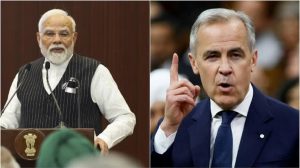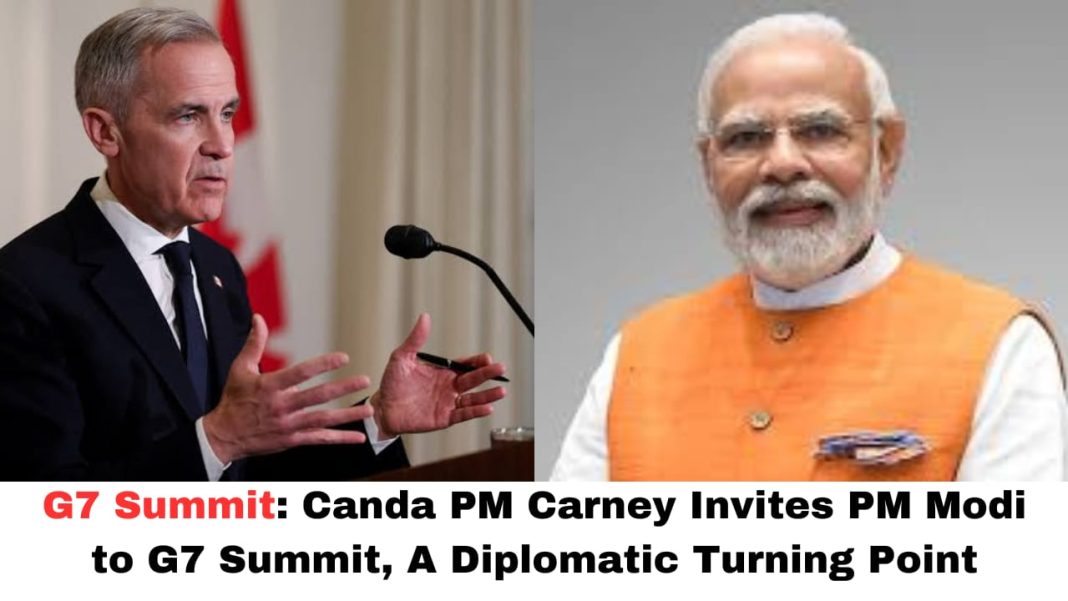Digital News Guru National Desk:
G7 Summit invite for Modi
In a significant move signaling a thaw in strained relations, Canadian Prime Minister Mark Carney extended an invitation to Indian Prime Minister Narendra Modi to attend the 51st G7 Summit, taking place June 15–17, 2025, in Kananaskis, Alberta. The call, made on June 6, 2025, marks a high‑profile breakthrough following two years of diplomatic tension between the two democracies
Background: Diplomatic Strains between Ottawa and New Delhi
India–Canada relations fractured in 2023 when Justin Trudeau publicly accused India of involvement in the assassination of Sikh separatist leader Hardeep Singh Nijjar on Canadian soil. India strongly denied the allegations. The situation escalated in October 2024, resulting in the mutual expulsion of diplomats after RCMP laid out allegations of Indian government involvement in criminal activity within Canada
Under Trudeau’s administration, the deteriorating trust led to the indefinite shelving of high‑level engagements. Even the G7 remained uncertain on India’s participation—until now. In the spring of 2025, speculation swirled as Ottawa invited nations like Australia and Ukraine but made no move toward extending the same gesture to India
With Carney’s election in early 2025, however, the tone has noticeably shifted—a recalibration driven by geopolitical strategy, economic opportunity, and public sentiment in Canada.

The Call: Invitation Extended and Accepted
On June 6, PM Carney phoned PM Modi, invited him, and express eagerness for Modi’s participation in the upcoming G7 summit. Modi took to X (formerly Twitter) to confirm the invitation and his acceptance:
“Glad to receive a call from Prime Minister @MarkJCarney of Canada. Congratulated him on his recent election victory and thanked him for the invitation to the G7 Summit in Kananaskis later this month. As vibrant democracies bound by deep people‑to‑people ties, India and Canada will work together with renewed vigour, guided by mutual respect and shared interests. Look forward to our meeting at the Summit.”
Why the Invitation Matters
- Diplomatic Reset
This invite represents more than just access to a summit—it signals a reset in diplomatic engagement between two global democracies. Under Trudeau, relations hit historic lows over mutual accusations and mistrust, spilling into media scrutiny and community backlash. Carney appears determined to rebuild that relationship, explicitly breaking from Trudeau’s confrontational posture
- A Rebuff to Khalistani Lobby
Observers in Canada and India have noted that inviting Modi sends a clear message to Canada’s pro‑Khalistan groups. In recent months, these groups have advocated for boycotts and lobbied hard against Modi’s presence in Canada. By inviting the Indian PM, Canada signals its stance—prioritizing state-to-state diplomacy over domestic lobbying
- India’s Rising Global Influence
While India is not a G7 member, its contribution to global issues—climate change, food security, technology, and Indo‑Pacific strategy—has been steadily growing. Modi’s presence at the 2025 summit highlights India’s importance in shaping international discourse and multilateral cooperation.
What’s on the Agenda?
The G7 summit in Kananaskis is expected to address critical global challenges:
- Economic resurgence post‑COVID, including rethinking supply chains and economic resilience.
- Climate action, with strategies to halve global greenhouse gas emissions by 2030.

- Global security, especially handling Russia’s ongoing war in Ukraine and maintaining Indo‑Pacific stability.
- Trade & development, with potential side‑talks on New Delhi’s trade posture and Indo‑Pacific diversification.
India’s expertise on sustainable development, green energy, and geopolitical insight into China’s role in the Indo‑Pacific will likely feature prominently in both summit sessions and bilateral meetings.
Bilateral Meetings Expected
Modi’s attendance opens opportunities for key one-on-one and group meetings:
- With PM Carney, to carve a new path in bilateral trade—Canada remains India’s 10th-largest trading partner, particularly in pulses like lentils
- With US President Trump, amidst ongoing bilateral trade negotiations—this summit may mark a pivotal moment
- With other leaders (Germany, UK, Japan), enhancing India’s standing and forging strategic economic and climate commitments.
The outreach session, where non‑G7 leaders participate, offers Modi a platform to share India’s perspectives on regional security, climate resilience, and global supply chains—further reinforcing India’s voice on stage.
A Strategic Win for Both Nations
For Canada, inviting Modi achieves multiple objectives:
- Reopen diplomatic avenues and ease bilateral strains.
- Reinforce alliances within the Indo‑Pacific by engaging with a major regional player.
- Support economic growth through renewed trade and cooperation.
For India, this is a diplomatic win:
- Visibility on the global stage at one of the world’s premier leadership forums.
- A consolidated way to address global and regional issues alongside advanced economies.
- A gesture of respect and recognition from a G7 host, setting a positive tone for future summits.
What Comes Next
With the summit just 9 days away, anticipation is mounting. Media in both Canada and India are tracking preparations: accommodation, security, and agenda finalization.
Analysts note a narrative shift—from suspicion to mutual engagement—under Carney’s leadership. Whether this invitation translates into durable policy alignment remains to be seen. Commerce and diplomacy experts are watching closely, with trade talks and India-Canada initiatives on climate, education, and diaspora relations expected to be on the radar.

Conclusion
The invitation to PM Modi is not just a courtesy—it is a strategic pivot in international cooperation. Against a backdrop of two years of tension, it charts a fresh path toward renewed diplomacy, strategic alignment, and global collaboration.
As the summit approaches, all eyes will be on Kananaskis. Will this gesture herald a meaningful thaw in relations, spurring economic and strategic engagement? Or will deep-rooted issues persist beneath the surface? The answers may shape Indo‑Canadian relations—and India’s global standing—in the years ahead.
You May Also Read: Chenab Bridge Inaugurated by PM Modi, World’s Tallest Railway Arch








